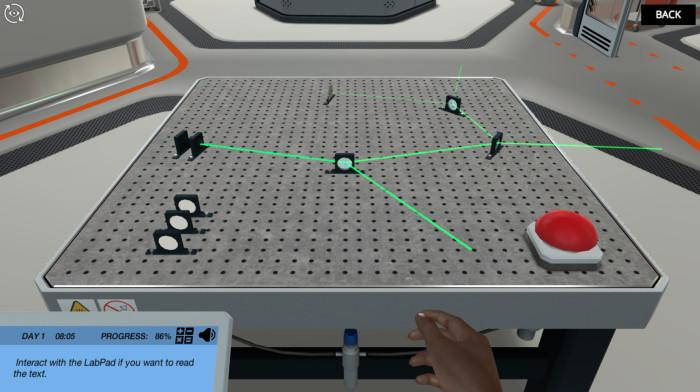
Did you know that light, the omnipresent force we rely on from dawn to dusk and beyond, propagates through waves? The wave model of light is a fundamental concept in physics that describes light as a form of electromagnetic wave.
Exploring this captivating model not only deepens students' comprehension of the science behind light but also opens up a world of opportunities for them. However, teaching this complex topic can often be a challenge for educators.
To make things easier, we have presented five engaging ways to teach the wave model of light. So, let’s unveil the mystery of light waves in a way that is enlightening, engaging, and relatable.
Since light has a wave nature, it is hard for students to visualize how light alters its direction when it travels across a medium or comes across an obstacle.
One great way to overcome this hurdle is the use of interactive models. These models allow students to visualize how light travels across the medium. They can manipulate the properties of light waves, and see results in real-time, which leads to a deeper comprehension of the subject.
For instance, Labster's 3D labs offer a virtual environment where students can experiment with light waves. In the Wave Model of Light simulation, students observe the refraction and reflection with an optical setup comprising lenses, mirrors, and a light source. They reposition these obstacles and see how the light path changes, observing Snell’s law in action.

Teaching abstract principles and theories often leads to a classroom environment that can be perceived as dull or boring. However, by incorporating games and engaging activities into your lessons, you can ignite excitement among students.
For instance, you can design a Light Trivia Challenge for students. Test their knowledge by asking related to light wave properties, and how would it behave when it comes across smaller or larger obstacles.
You can also ask them to design an Optical setup of lenses and mirrors which shows the difference between refraction and reflection. With this activity, they can observe how mirrors reflect while lenses refract light.
Remember to provide opportunities for discussion during and after these activities to reinforce the understanding of the wave model of light.
Teaching optical topics requires visuals to showcase light waves and their path. However, it can be challenging for teachers to accurately draw these visuals on the board. And without these graphics, it would be hard for students to grab the concept.
Technology offers a wealth of resources for teaching the wave theory of light. Virtual reality, online simulations, and 3D animations can all be used to create engaging and immersive learning experiences.
With virtual simulations and 3D animations, students can easily witness the light behavior during its journey across mediums. Similarly, virtual reality can transport students into a world where they can interact with light waves in a way that would be impossible in a traditional classroom.
One excellent online tool in this regard is the Labster Wave Model of Light simulation, where students learn about the visible spectrum of electromagnetic waves and explore the different wave-nature properties of light.

Discover Labster's Wave Model of Light virtual lab today!
To inspire students and provide a practical context for their learning, it is essential to connect the study of the wave model of light to potential careers.
Educators can mention multiple careers related to this topic, such as optical engineers, laser technicians, and photonics researchers.
By exploring these careers, students can see the real-world applications of the wave model of light and understand its importance beyond the classroom. This can motivate them to engage more deeply with the topic and foster a lifelong interest in physics.
The wave nature of light is not just an abstract concept; it has numerous real-world applications. From the functioning of our eyes to the technology behind lasers and fiber optics, light is integral to our daily lives.
Moreover, medical imaging techniques such as X-rays, MRIs (Magnetic Resonance Imaging), CT scans (Computed Tomography), and even basic photography rely on the wave nature of light.
By citing these real-world applications, you can make the wave model of light more relatable for students. This will help them understand the practical importance of the topic and its relevance to various fields.
Teaching the wave model of light creatively can significantly enhance students' understanding and interest in the topic. With these engaging teaching methods, from interactive models to real-world applications, you can inspire students to explore this fascinating area of physics.
Whether you're an educator seeking a fresh pedagogical approach or a student yearning for an engaging delve into the world of light waves, these thoughtfully designed teaching methods are sure to illuminate your understanding.
Try our free 30-day All Access Educator's Pass today and teach with the Wave Model of Light simulation alongside 300+ other virtual labs!

Labster helps universities and high schools enhance student success in STEM.
Request DemoRequest a demo to discover how Labster helps high schools and universities enhance student success.
Request Demo